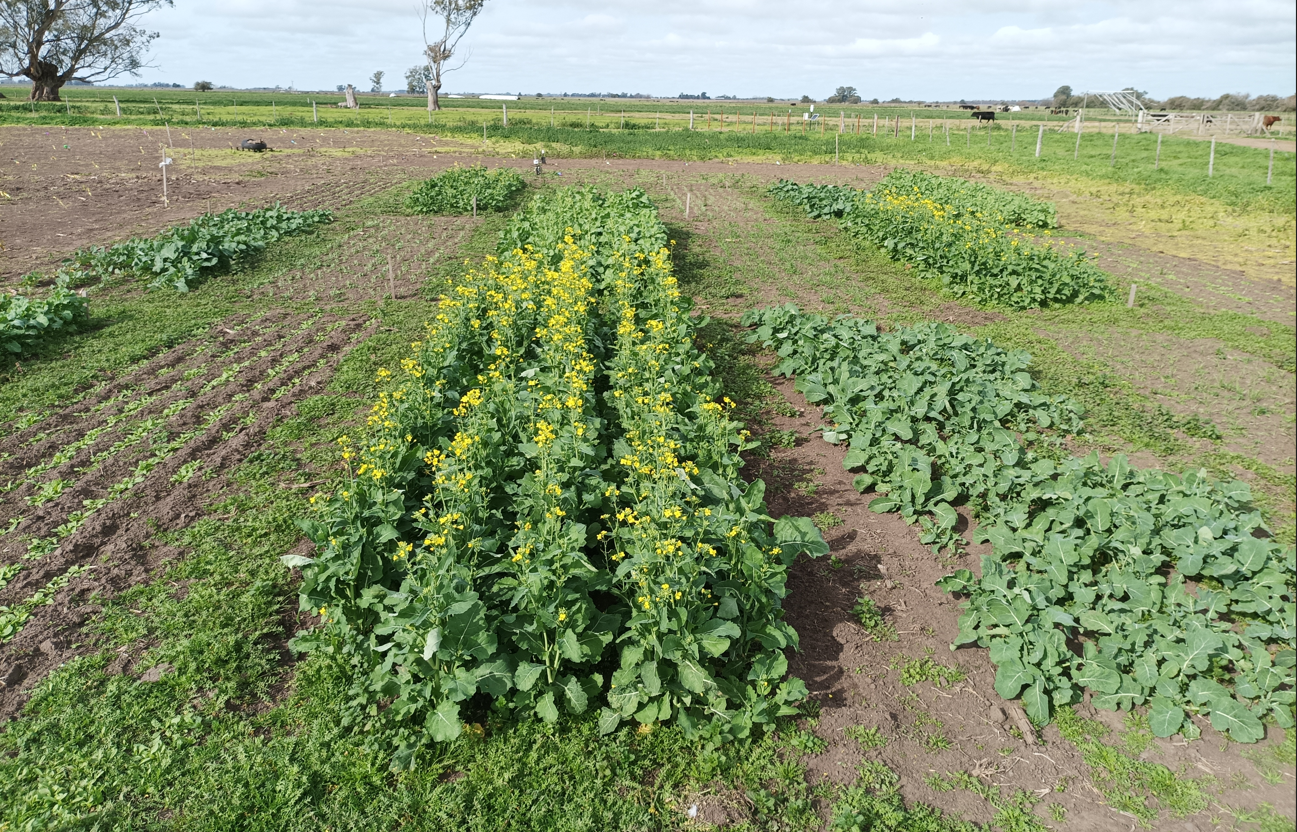
Cultivating in Saline Soils
The Argentinian use case focuses on the Pampas region which in general is characterized by large plains with flat terrain and is primarily used for cereal production. But the use case focuses on the areas of the Pampas that are less suitable for agriculture, due to flooding and waterlogging and salinity and alkalinity. The main biophysical constraint in the use case is salinization.
📍 Location: Pampas Region, Argentina, with replication focus on the Salado River Basin
🌾 Area: 15000 ha
🌡️ Climate: Temperate with drought and flooding cycles
🌱 Bio-based products: Winter oilseeds (camelina, carinata, canola), PGPR-based biofertilisers, edible mushrooms
Main Challenges
The Argentinian use case focuses on marginal areas of the Pampas region, particularly those affected by salinisation, waterlogging, and flooding, which render them unsuitable for conventional agriculture. These conditions have limited the use of these lands, even though the Pampas is typically a highly productive agricultural zone. The use case addresses how to unlock their potential for sustainable and bio-based innovations.
Solution within Margin-UP!
The project explores three innovative value chains adapted to the environmental limitations of these marginal lands, which aim to improve agri-food production, microbial biotechnology, and environmental services in saline soils. These include:
- The sustainable production of winter oilseed crops such as camelina, carinata, and canola.
- The use of plant-growth-promoting microorganisms (PGPRs) and endophytic fungi delivered via organic nanoparticles derived from native plants.
- The cultivation of edible mushrooms using hay from native Lotus grasslands.

Benefits
MarginUp!’s proposed alternative land uses offer various social, environmental, and economic benefits.
Biodiversity enhancement
Circular use of biomass
Replication potential
Improved soil quality and productivity
Water optimised production
New regional business models
GHG emissions reduction
Soil health
Stakeholders Engaged
- IoT companies focused on agriculture
- Small businesses using nanoparticles
- Importers of phosphoric rock
- Researchers in microbiology and environmental science
- Local agricultural producers and innovators
Interest Groups
- Agri-food and biotechnology companies
- Sustainable farming and fertiliser developers
- Environmental service and metagenomics researchers
- International stakeholders in saline/marginal lands
- Investors in microbial biotechnology and nanotech
- EU and Latin American partnership networks
Implemeted actions
The team has launched studies across three tracks. The first focuses on winter oilseeds, targeting sustainability and environmental impact measurement. The second isolates PGPR and endophytic fungi from extreme-environment plants (e.g. Lotus, Distichlis) and combines them with organic nanoparticles to deliver nutrients, such as solubilised phosphates, to plants. The third has produced initial results using Lotus hay as a growing substrate for edible mushrooms. In addition, environmental services in marginal lands are being monitored through LCA and metagenomic analysis.
Timeline
Winter oilseed crop trials (camelina, carinata, canola).
PGPR and endophytic fungi isolated from native plants.
First nanoparticle formulations and mushroom trials (using Lotus hay).
Scale up PGPR applications and nanoparticle delivery.
Continue environmental monitoring (LCA, metagenomics).
Host stakeholder workshop with European partners.
Finalise partnerships and replication strategy.
Expected Results
- Improved agricultural practices in saline and waterlogged soils.
- Prototype fertilisers using nanoparticles and PGPRs.
- Sustainable mushroom production from native biomass.
- Data on environmental services, such as soil restoration and nutrient cycling.
- Partnerships with EU stakeholders for long-term developmen
Replication Potential
The project has strong replication potential in other saline or waterlogged marginal lands worldwide. Innovations in microbial biotechnology, sustainable oilseed production, and the use of local biomass for food production provide scalable models for sustainable agriculture in difficult environments. The Salado River Basin alone offers an extension area of 9 million hectares for future replication.
